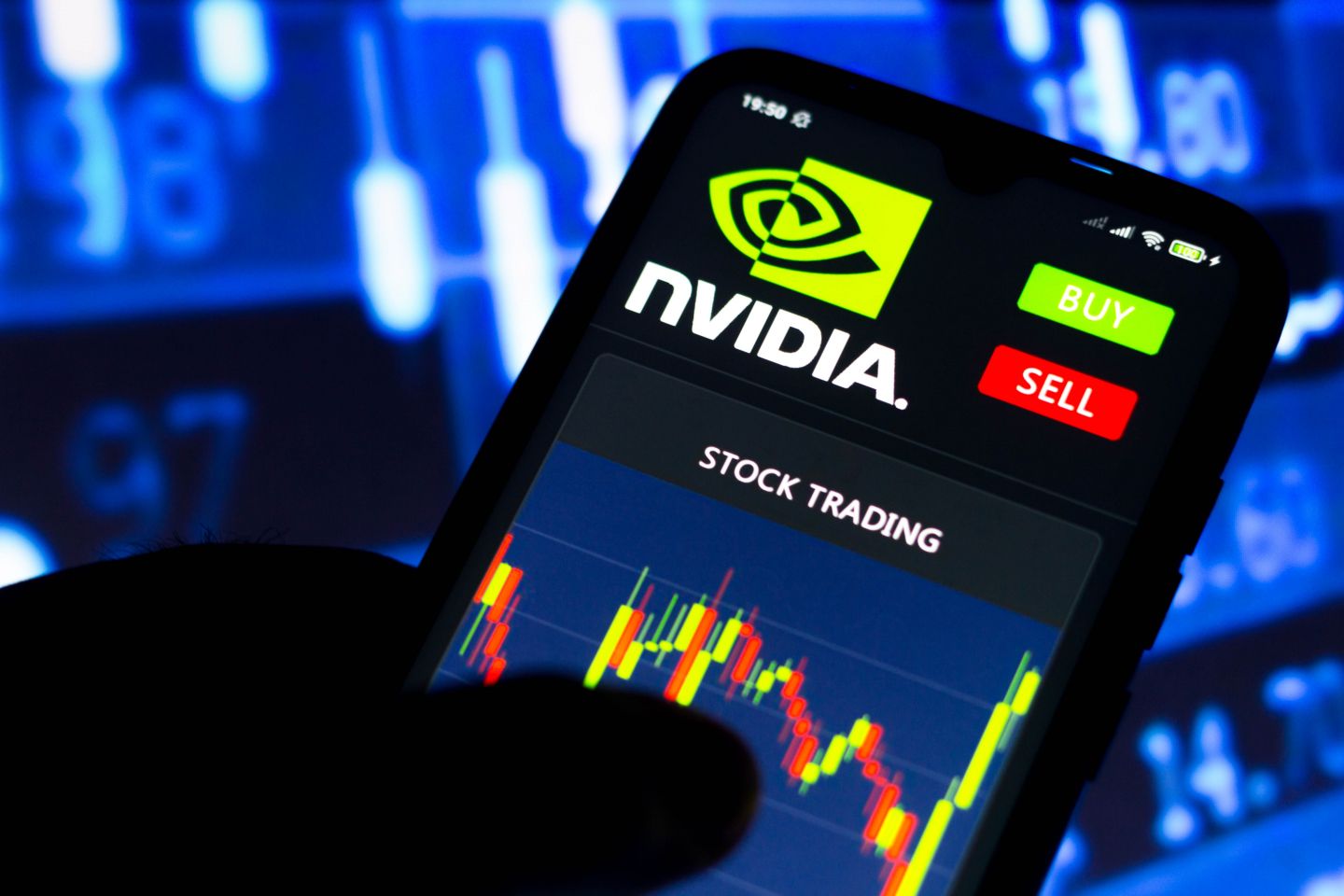Nvidia stock splits: will NVDA split again?
Over the past two decades, Nvidia has carried out a series of stock splits that trace its evolution from a gaming-focused chipmaker into a major player in AI and data-centre technology.
Nvidia’s share price has undergone several major stock splits over the past two decades, each reflecting the company’s transition from a gaming-focused chipmaker into one of the most influential forces in artificial intelligence (AI) and data-centre computing.
The most recent 10-for-1 stock split on 10 June 2024 followed a sharp rise in the share price and record earnings, underlining the company’s expanding role at the centre of the AI infrastructure boom.
So, how have these splits affected Nvidia’s share performance, and what can investors learn from its evolving capital structure?
What is a stock split?
A stock split increases the number of outstanding shares by a defined ratio while reducing the price per share proportionally. The company’s market capitalisation remains the same, as the total value of each investor’s holdings is unchanged.
For example, in a 10-for-1 split, shareholders receive ten shares for every one they hold, while each share becomes one-tenth of its previous price.
Stock splits are often designed to make shares more accessible for retail investors and employees, helping to improve liquidity and encourage wider participation. They have been used by several large-cap firms – including Amazon, Alphabet and Tesla – to broaden ownership and support employee equity schemes.
Nvidia stock split history
As of 17 November 2025, Nvidia (NVDA) has conducted six stock splits since 2000, each coinciding with a period of significant expansion:
| Date | Split ratio | Cumulative effect |
|---|---|---|
| 27 June 2000 | 2-for-1 | 2:1 |
| 12 September 2001 | 2-for-1 | 4:1 |
| 7 April 2006 | 2-for-1 | 8:1 |
| 11 September 2007 | 3-for-2 | 12:1 |
| 20 July 2021 | 4-for-1 | 48:1 |
| 10 June 2024 | 10-for-1 | 480:1 |
In total, one share held before June 2000 now represents 480 Nvidia shares.
These splits highlight Nvidia’s transformation from a niche graphics-card manufacturer into a leader in AI computing, gaming and data-centre technologies. They have also enhanced share accessibility, particularly for employees taking part in equity programmes.
Nvidia’s 2024 stock split and price performance
The 2024 10-for-1 stock split was announced in May and took effect on 10 June 2024, reducing Nvidia’s share price from over $1,200 to around $120. The move followed recent quarterly results and aimed to make ownership more accessible to retail investors and staff.
Following the split, NVDA declined and later recovered, reaching an intraday high of $212.21 on 29 October 2025, before trading mostly in the $176–$190 range during September–November 2025 (for example, it closed at $187.96 on 17 November 2025).
In 2025, NVDA traded between an intraday low near $86 in April and an intraday high of $212.21 on 29 October, reflecting periods of volatility around earnings releases and AI-related updates.
Past performance is not a reliable indicator of future results.
What does the Nvidia stock split mean for investors?
While a stock split does not change a company’s fundamentals, it can make shares more accessible and improve liquidity. For Nvidia, the 2024 split reflects its market maturity and wide shareholder base.
The company’s long-term growth continues to mirror the expansion of the AI ecosystem, spanning cloud computing, semiconductors and autonomous systems.
Key takeaways
- Nvidia has executed six stock splits since 2000, the latest a 10-for-1 in June 2024.
- One pre-2000 share now equals 480 NVDA shares.
- The 2024 split reduced the share price to around $120, followed by a rebound to new highs above $212.
- Revenue growth has stayed above 50% year-on-year, supported by strong AI and data-centre demand.
- Q3 FY2026 results are expected on 19 November 2025, with robust revenue guidance.
- Stock splits improve accessibility but do not affect intrinsic value; market performance depends on fundamentals and sentiment.
Create an account Open a demo account
FAQ
When did Nvidia split its stock?
Nvidia most recently completed a 10-for-1 stock split on 10 June 2024, following an earlier 4-for-1 split on 20 July 2021. The move was intended to make Nvidia shares more accessible to retail investors and employees.
How many times has NVDA split?
Nvidia has carried out six stock splits in total, with the June 2024 event following five previous splits between 2000 and 2021.
Can I trade Nvidia stock as a CFD on Capital.com?
Yes. You can speculate on Nvidia’s price movements by trading NVDA CFDs on Capital.com, without owning the underlying shares. CFDs allow traders to go long (buy) or short (sell), but trading CFDs involves margin – leverage amplifies both profits and losses.